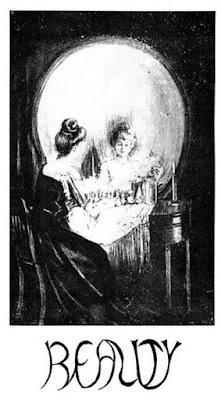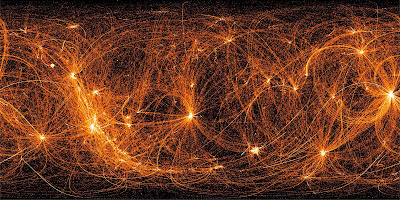While grappling with the works of William Blake and his foremost literary interpreter, Northrop Frye in his book Fearful Symmetry, I came up with a triptych, where each of the three panels uses a different mode of expression and there is a vertical symmetry based on the pentagram that reflects the natures of the fallen and unfallen worlds.
The left panel (below) presents the basic information that is then presented schematically in the next or central panel, and then as images and art in the right panel:
Reflected in the central panel is the symmetry of Blake's unfallen and fallen worlds. The line inscribed on the Ouroboros is from Fearful Symmetry(p.135): "Selfhood: an earth-bound, cold-blooded and often venomous form of life imprisoned in its own cycle of death and rebirth."
The right hand panel is made up of two engravings by William Blake. The top engraving is referred to as The Dance of Albion, 1780. The lines between the engravings are from Blake's manuscript poem The Four Zoas, p.5 lines 10-12. The lower engraving is The Ancient of Days and portrays Urizen Creating the World, 1824-7?
Fearful Symmetry by Northrop Frye is available to borrow in PDF format at the Internet Archive:












































